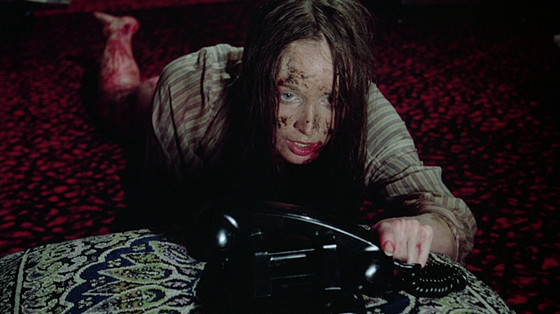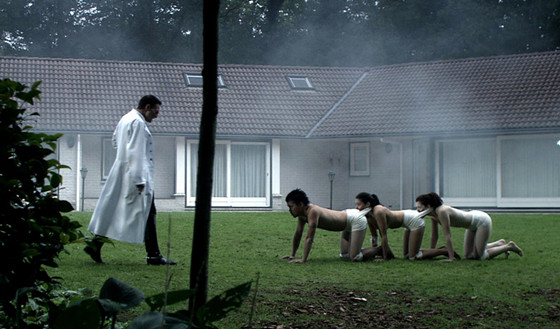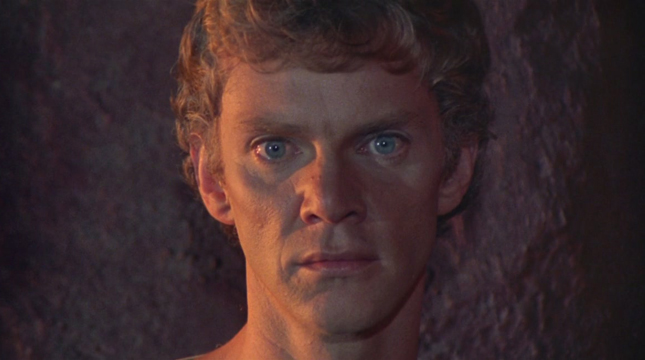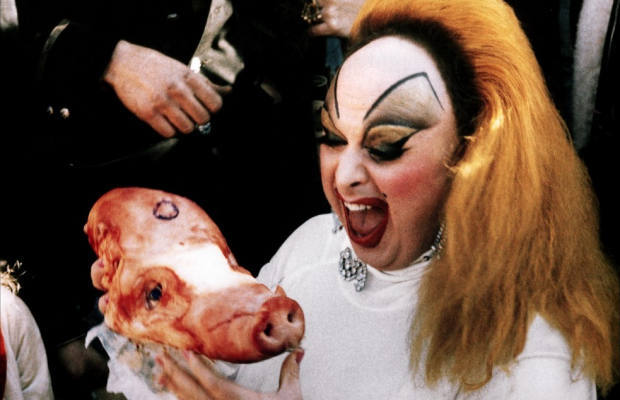
Shock cinema is a genre (a term that is loosely used here) that always existed, but in different forms and content, as it changes along with the changes in society’s tolerance. As time goes on, people grow more and more used to things, with very few of them remaining relatively stable.
I have personally, repeatedly argued about the great importance in films’ ability to shock the viewer, for questioning established ideas and ways, and for pushing the limit a bit further each time, only for it to always distance itself endlessly when approached. And it’s always a challenge for filmmakers, especially in our contemporary cinema, for the sake of creation through denouncement of the old and growth through limit-pushing, or just for their “artistic ego,” to manage to come up with ways to genuinely shock the audience, an audience that has seen it all by now.
The following list is an attempt to collect and present only some of the films that have been considered shocking for a large part of the audiences. Some of the entries on it constitute timeless shockers, which don’t seem to lose much of their initial effect when watched nowadays for the first or even the second time, while others earned their place because of the ballyhoo they caused back in their time.
And it’s actually interesting, in my personal opinion, to compare and contrast once in a while, in order to see how values and even aesthetic criteria have changed over time; what the audience (and therefore, society) has become immune to, which might have once been highly controversial; what has been proved to be more or less timelessly “unacceptable”; and what composes a “took-it-too-far” element for people nowadays.
10. Fireworks (dir. Kenneth Anger, 1947)

“Fireworks” is one of the early short films made by the American underground filmmaker Kenneth Anger. The story follows a Dreamer (Kenneth Anger himself), who awakens from a dream and goes out during the night. He comes across a group of sailors (Gordon Gray and Bill Seltzer), who proceed to violently rape and torture him.
Shot in his parents house while they were away for the weekend, Anger made at the age of 17 this experimental, homoerotic film that led him to get arrested on obscenity charges later on.
A point of reference for experimental filmmaking, “Fireworks” is a disturbing collaboration of violence dressed in a dark, nightmarish atmosphere. And before thinking “I don’t feel shocked,” bear in mind that this was made in 1947, when audiences were not so much used to seeing sadomasochism or even homoeroticism on screen.
Anger had stated concerning the film, “This flick is all I have to say about being 17, the United States Navy, American Christmas, and the Fourth of July.”
9. I Spit on Your Grave (Day of the Woman) (dir. Meir Zarchi, 1978)

The film follows Jennifer Hills (Camille Keaton), an aspiring writer from New York who decides to spend her summer vacation in an isolated cabin in what at first looks like and ideal scenery in the countryside, to write her first novel.
Unfortunately, however, the young woman attracts the attention of the wrong people, ending up gang raped and left unconscious by a group of local men who consider her dead. When the young writer wakes up, she begins a “journey” of vengeance on the four men.
“I Spit on Your Grave” is another entry on this list that fails to truly shock viewers in our days. Many of the violent things happening, like the mutilations of reproductive organs, are insinuated. The violence that actually takes place on scene, like the rape and physical abuse on Jennifer, is limited and not so gruesome either.
The insinuated violence, however, is awful. Which is probably the reason it was considered a shocker upon its release in 1978. It is also performed by a female lead, which justifies the feminism-linked title “Day of the Woman,” and it could be claimed, perhaps, that back in the ‘70s, women presented as vindictively and gruesomely violent against men was not a very common thing to see in film.
8. The Human Centipede (First Sequence) (dir. Tom Six, 2009)

Three tourists (Ashley C. Williams, Ashlynn Yennie and Akihiro Kitamura) in Germany get kidnapped by Dr. Josef Heiter (Dieter Laser). Heiter is a surgeon who wishes to create conjoined new creatures by surgically sewing people together. Not having succeeded in his previous experiments, the deranged scientist uses the three tourists as his guinea pigs, by stitching their mouths to each others’ anuses in what is meant to form a “human centipede.”
Now, “The Human Centipede” is not a great film by any means. What’s interesting, however, is the fact that its script was so original that it managed to shock its viewers by its actual main idea, instead of the way things were presented or shot.
It doesn’t contain a lot of particularly graphic or gory scenes, which was intentional, as the director wanted it to be as realistic and medically accurate as possible. As a matter of fact, it is often considered funny and dull, with its content not living up to the expectations it creates at first, and its overall execution not being exactly artistically superb.
However, the concept of creating a human centipede, out of people that share one connected gastric system, does deliver an authentic sense of disgust and disturbance, which is a rare case for films made so recently as 2009.
7. Caligula (dir. Tinto Brass, Bob Guccione, Giancarlo Lui, 1979)

“Caligula” is an unusual case of a film produced by the men’s magazine Penthouse. It follows the tragic life story of the rise and fall of Rome’s emperor, Caligula (portrayed by Malcolm McDowell).
The original screenplay by Gore Vidal meant to focus on how “absolute power corrupts absolutely,” but was significantly altered by director Tinto Brass, who saw Caligula as a “born monster,” resulting on Vidal to disavow the film. Later on, Brass would also disavow the film when the producers altered his work, by shooting themselves the unsimulated sexual scenes they wanted (and Brass had refused to shoot), using Penthouse Pets and Giancarlo Lui’s outcast “acquaintances.”
The final outcome is an indistinguishable combination of a historical epic with indeed some historical accuracy and an explicit pornographic extravaganza, sitting through the whole of which was a nerves test for audiences and critics, and continues to be so nowadays.
“Caligula” is considered to be among the worst films ever made. It is shocking and shockingly bad. But not the so-bad-it’s-good kind of ones, like “The Room” or “Plan 9 from Outer Space” or some Nicolas Cage performances, nor the no-one-gives-a-damn-about-them kind of ones, like all the unsuccessful films produced every year. It’s one of those bad films that actually irritate you, which, however, can’t but account for some sort of success for the filmmakers in a way.
6. Pink Flamingos (dir. John Waters, 1972)

Babs Johnson (drag queen Divine) is a criminal hiding in a trailer in Baltimore with her mother Edie (Edith Massey), Cotton (Mary Vivian Pearce) and her son Crackers (Danny Mills). Babs proudly owns the title of “the filthiest person alive,” according to tabloid newspapers.
Raymond and Connie Marble (David Lochary and Mink Stole, respectively) are a couple who run a black market business of kidnapping and impregnating young women, in order to sell the babies to lesbian couples. Jealous of Divine’s title, the couple confronts her and her family on who is the filthiest, and a battle between them begins.
Featuring a variety of provoking, unsettling, and stomach-turning elements, from incest and cannibalism to rape, gluttony, vomiting, and crap eating, “Pink Flamingos” is an incredibly low-budget, entertaining, obscene, politically incorrect comedy that took everything too far.
Part of its creator’s “trash” trilogy, the film is an “exercise in poor taste” with a huge cult status, which established John Waters (who wrote, directed, filmed, produced, and edited it) as a king of bad taste movies, who literally fed the audience shit and a lot of them ate it. All in all, whether charmed or disgusted by it, “Pink Flamingos” can’t leave you indifferent.